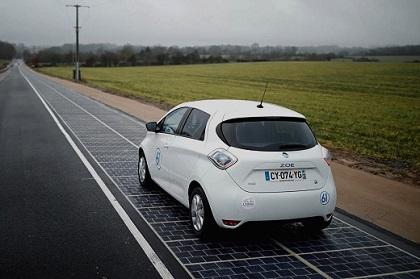In 2016, France announced an exciting plan that would hopefully power 5 million homes with electricity. The plan entailed paving over 1000 kilometers of road with photovoltaic panels, generating around 790kWh every day. However, what was supposed to the first step of a revolutionary development ended up being a bitter disappointment.
One kilometer and eight million dollars later, the issues of the road were already piling up.
The solar panels suffered immense wear and tear, to the point where some were completely shattered from the pressure of traveling cars. Some sections also failed to work to their full potential when moving dirt had covered the panels. Their horizontal position on the road also meant they were not directly facing the sun for many hours of the day, adding up to be incredibly inefficient.

The road also generated a strange noise, which forced traffic officials to change the speed limit of the paneled road to 70 kilometers per hour.
Now that the experiment is over, the government’s idea of rolling out 1,000 kilometers of the solar road has ground to a sudden halt. With all of the issues that have dogged the road, the electricity output of the solar road has been abysmal.
Alain Pelleray, a senior regional officer in the department of Orne in Normandy told media:
“As time went on, we realized that on an economic and financial level, in terms of producing electricity, it was a failure.”
The initial projection was that the roadside solar panels would, from December 2016 to March 2019, generate 624MWh (megawatt hours) but it the final results didn’t even make it halfway with the road only generating 229MWh. The plan was to sell the electricity to state-owned power company EDF with an expected 35,000 dollar profit –however, they only sold 13,000 dollars.
Nonetheless, Pelleray says much has been learned from the project and they are looking forward to continuing the experimentation with solar roads. Pelleray said:
“We have no regrets, the department did not spend anything on this and we are talking about applied research. In terms of renown, we hit the jackpot. We’ve had visits by Korean and Chinese tourists and industrialists.”
It is also back to the drawing board for the manufacturer of the panels, Colas, to solve the complications associated with the panels themselves. Colas Group’s Wattway panels were tipped to be the most promising solar roadway technology manufacturers, and they now have to rethink the entirety of their panel engineering. Colas is reportedly working on hundreds of small solar experiments to in an effort to determine how to capture the most sun as possible.
In another part of the world, Chinese industrialists are witnessing their own problems with solar roadways. In 2018, China opened a ‘solar highway’ in Jinan which was said to be longest solar roadway in the world at the time of its opening.
The first issue was vandals stealing portions of the road, and the second was passing vehicles causing layers of damage to the road. The Chinese used a glass-based photovoltaic panel (covered with a layer of concrete) that splintered when heavy items fell from trucks onto the highway. The fractures in the panels got worse when passing vehicles dragged bits of glass down the highway.
The hurdles the solar roads have faced now represent an opportunity for engineers. Engineers can now apply what they have learned and look for ways to strengthen the photovoltaic solar panels.
Works Cited
“China’s ‘Solar Highway’ Was a Victim of Bad Design, Not Thieves.” South China Morning Post, 16 Apr. 2018, www.scmp.com/news/china/society/article/2131241/chinas-solar-highway-was-victim-heavy-traffic-and-bad-design-not.
Jakarta Post. “France to Try Again with Solar Road Plan.” The Jakarta Post, www.thejakartapost.com/life/2019/07/25/france-to-try-again-with-solar-road-plan.html.


